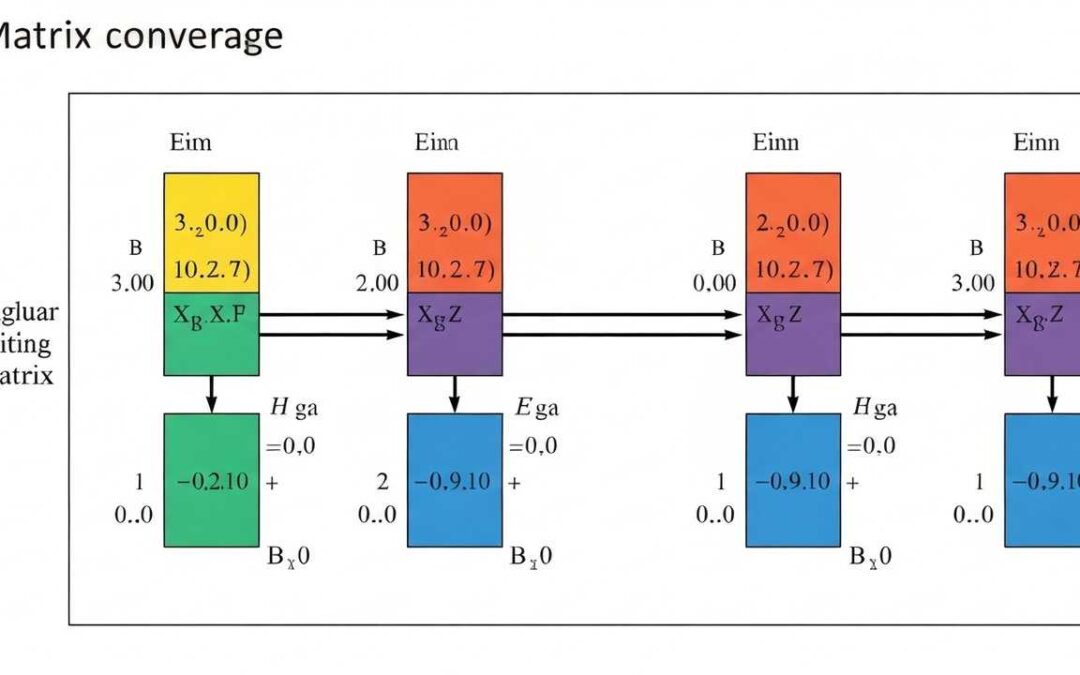When we think about calculus, two concepts that often come to mind are implicit differentiation and differential equations. These topics play a crucial role in understanding the relationships within mathematics. You might wonder why implicit differentiation is useful, especially when dealing with complex equations that can’t easily be solved for one variable. By exploring implicit differentiation and differential equations, we uncover fascinating connections that not only enhance our grasp of calculus but also pave the way for deeper insights in fields like algebraic geometry and differential algebra. It’s amazing how one mathematical process can lead to new ways of interpreting and solving problems.
As we dive into the world of implicit differentiation and differential equations, we’ll see how these concepts interact and enrich our understanding. The Implicit Function Theorem will emerge as a key player, guiding us in determining when we can express one variable in terms of another. This understanding becomes essential when the relationships defined by an equation seem elusive at first glance. In explaining these intricacies, we’re not just solving mathematical problems; we’re unveiling the layers of complexity that lie behind seemingly simple equations, allowing us to appreciate the beauty of mathematics in a new light.
We also Published
“Success is not final, failure is not fatal: it is the courage to continue that counts” – Winston Churchill
Understanding Implicit Differentiation and Differential Equations
This blog post aims to illuminate the intriguing relationships between implicit differentiation and differential equations. These topics not only form the foundation of calculus but also resonate deeply in various fields of mathematics, including algebraic geometry and differential algebra. As we delve into this subject, we will also explore the implications of the Implicit Function Theorem and its significance in solving complex relationships.
Problem Statement
The question presented revolves around finding instances where a relation defined as ##F(x,y) = 0## can be challenging to solve for ##y=f(x)##, yet differentiating this relation can yield a more approachable differential equation ##G(x,y,\frac{dy}{dx}) = 0##. This duality between implicit differentiation and solvability raises some deep mathematical questions.
Implicit differentiation is a powerful tool in calculus. When applied to a relation rather than a function, it presents unique challenges and insights. The crux of the matter lies in establishing whether such phenomena occur only in special cases or if there are generalized scenarios across various types of functions and equations.
Solution Exploration
Understanding Implicit Differentiation
When we have a relation ##F(x,y)=0##, the implicit differentiation process involves differentiating both sides of the equation with respect to ##x##. This leads to the expression: ### F_x(x,y) + F_y(x,y) \cdot \frac{dy}{dx} = 0 ### where ##F_x## and ##F_y## are the partial derivatives of ##F## with respect to ##x## and ##y## respectively. Rearranging this gives us: ### \frac{dy}{dx} = -\frac{F_x(x,y)}{F_y(x,y)} ### This signifies that the derivative of ##y## with respect to ##x## is inherently linked to the properties of the relation defined by ##F(x,y)##.
Characterizing Differential Equations from Implicit Relations
By differentiating the implicit relation, it can yield differential equations that sometimes exhibit characteristics of being easier to solve. If we let: ### G(x,y,\frac{dy}{dx}) = F_x(x,y) + F_y(x,y) \cdot \frac{dy}{dx} = 0 ### we derive a differential equation related to our original function. Importantly, certain forms of ##F(x,y)=0## can be redefined into tractable differential equations under the right conditions, especially when they possess continuous first partial derivatives.
Insight from the Implicit Function Theorem
The Implicit Function Theorem plays a crucial role here as it asserts the local existence and uniqueness of a function defined implicitly. If ##F: \mathbb{R}^n \times \mathbb{R}^m \to \mathbb{R}^n## is a function and the derivative condition is satisfied at a point, then we can locally express ##y=f(x)##. Thus, when solving ##F(x,y)=0##, if the required conditions are met, we can transition to solving the corresponding differential equation effectively.
Local Behavior versus Global Solutions
It’s essential to distinguish between local behavior and the existence of global solutions here. The existence guaranteed by the theorem pertains to a local neighborhood of a point where conditions align correctly. Hence, while the approach using implicit differentiation yields insights, solving differential equations may still require sophisticated methods, especially for global solutions. Therefore, even if the differential equation appears simpler, it might lead us to special functions or numerical solutions.
Methods of Analyzing Algebraic Functions
Considering algebraic functions represented by a relation, let’s take ##F(x,y)=0## where ##A## represents a nonconstant bivariate C-algebraic branch without a univariate factor over C. The complications arise from the algebraic structure that does not straightforwardly lend itself to functions defined by elementary operations. Here, the underlying differential algebra provides the tools to analyze which kinds of differential equations stem from such relations may allow closed-form solutions.
Finding Special Solutions
In some instances, while the relation ##F(x,y)=0## may not yield an explicit solution for ##y=f(x)##, the differentiation leads to a system like: ### F_1(x,y) + F_2(x,y) \cdot \frac{dy}{dx} = 0 ### This system can often be interpreted through analytical means or special functions, providing solutions that are not readily apparent. The composition of algebraic and transcendental functions introduces a rich variety of possible solutions, thus illustrating the necessity for a deeper understanding of differential equations derived from implicit differentiation.
Conclusion and Final Thoughts
Through this discussion, we see how implicitly defined relations can give rise to differential equations that may be more amenable to solutions. The interplay between algebraic structures and differential equations, particularly through the lens of the Implicit Function Theorem, reveals the complexity in transcending basic function definitions.
Summary of Key Findings
In summary, while the original question was aimed at discovering specific relations that could simplify from implicit definitions to differential forms, the broader implications show that mathematical inquiry into such topics often leads to more profound theoretical results. Understanding both implicit differentiation and differential equations—including their interdependencies—carries significant consequences for fields such as algebraic geometry and differential algebra. The exploration of solutions requires continuous investigation into the nature of functions defined implicitly and their derivatives.
| Concept | Description | Key Equations |
|---|---|---|
| Implicit Differentiation | Used to find the derivative of ##y## with respect to ##x## for a relation ##F(x,y)=0## | ### \frac{dy}{dx} = -\frac{F_x(x,y)}{F_y(x,y)} ### |
| Differential Equation Characterization | Transforming an implicit relation into a differential equation for easier solving. | ### G(x,y,\frac{dy}{dx}) = F_x(x,y) + F_y(x,y) \cdot \frac{dy}{dx} = 0 ### |
| Implicit Function Theorem | Ensures local existence and uniqueness of solutions defined implicitly. | None (conceptual) |
| Finding Special Solutions | Analyzing systems resulting from implicit differentiation to discover solutions. | ### F_1(x,y) + F_2(x,y) \cdot \frac{dy}{dx} = 0 ### |
In this mathematical exploration, we’ve uncovered the rich connections between implicit differentiation and differential equations. By employing implicit differentiation, we can tackle complex relationships that may not initially yield explicit solutions. This iterative approach allows us not only to derive differential equations but also to redefine our understanding of how relationships between variables can be established, especially using the Implicit Function Theorem as a guiding principle.
Understanding the nuances of these concepts fosters a greater appreciation for the interconnectedness in mathematics. The journey through implicit differentiation and differential equations leads us to recognize that even the most convoluted relations can reveal clearer paths to solutions when approached with the right techniques. Emphasizing thorough investigation into such topics is crucial for students and researchers alike. The analytical skills developed through this process of inquiry greatly benefit various areas of mathematics and physics.
- Implicit differentiation enables insights into functions that are not easily expressed as explicit equations.
- Differential equations derived from implicit relations often possess unique characteristics, making them potentially simpler to solve.
- The Implicit Function Theorem is vital for establishing local solutions and understanding the existence of functions.
- Continuous investigation into the relationship between implicit differentiation and differential equations can lead to broader mathematical insights.
- Continuous investigation into the relationship between implicit differentiation and differential equations can lead to broader mathematical insights.
As you continue your studies, keep in mind the power of implicit differentiation and differential equations. They are not just abstract concepts; they are gateways to solving real-world problems and discovering the depths of mathematical theory. Embrace the complexity, and you may find that solutions are closer than they appear.
RESOURCES
- Explain About Implicit Equations
- Implicit Differentiation | Engineering Math Resource Center
- Calculus I – Implicit Differentiation (Practice Problems)
- Calculus I – Implicit Differentiation
- Implicit Differentiation – Examples | Implicit Derivative
- Implicit Differentiation Formula – Method & Solved Examples
- Implicit Function – Definition, Formula, Differentiation of …
- Implicit Differential Equations
- Isnt solving a differential equation just like reverse implicit …
- 3.8: Implicit Differentiation
- Can implicit differentiation be used to find the general …








0 Comments